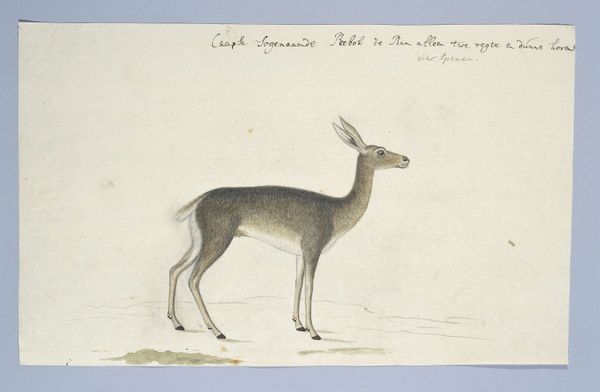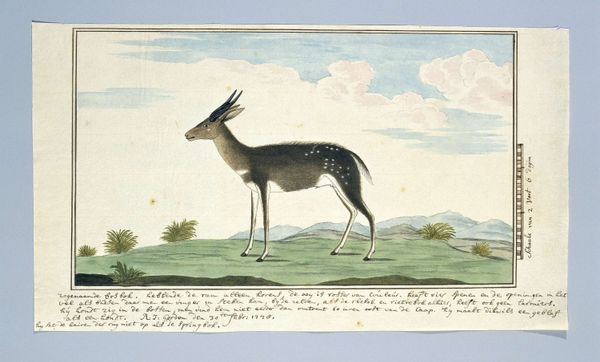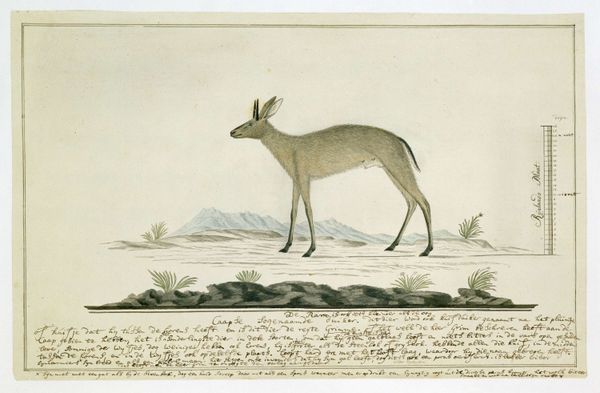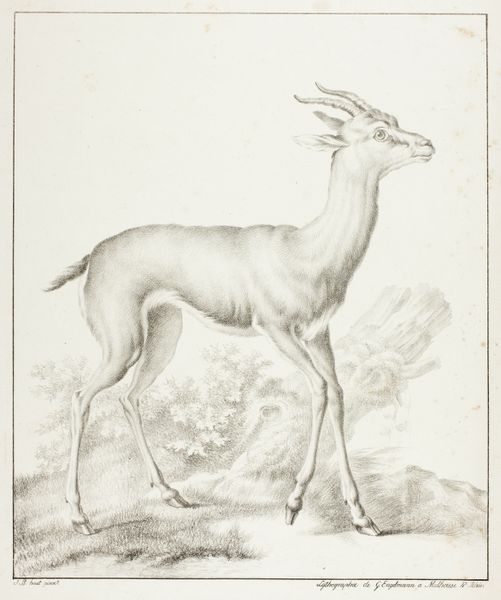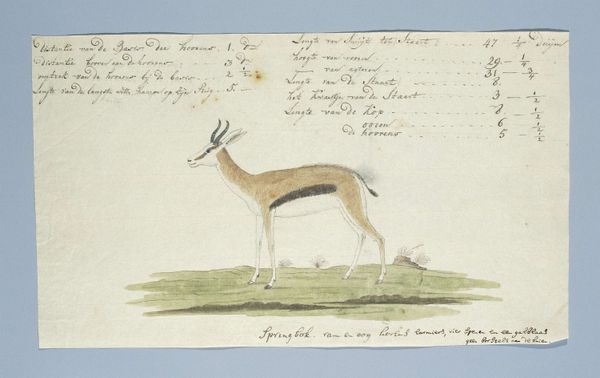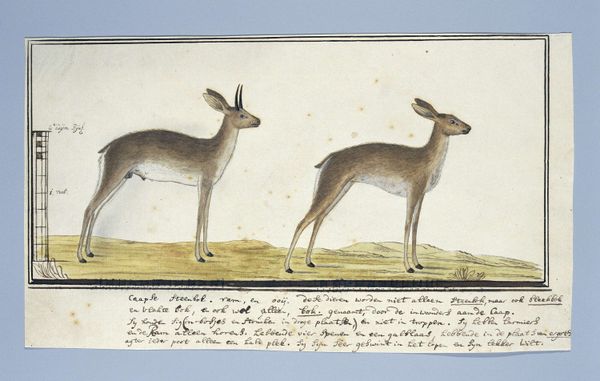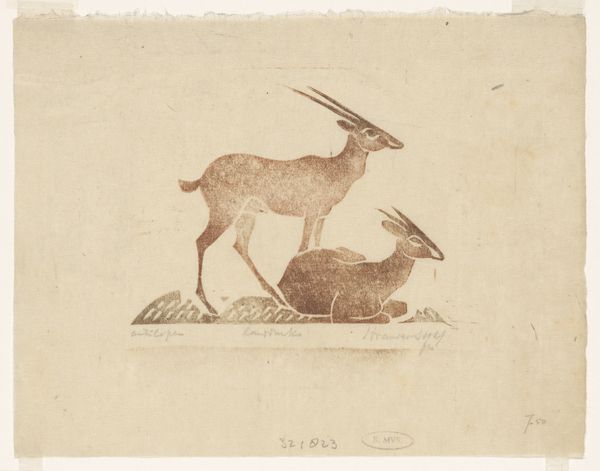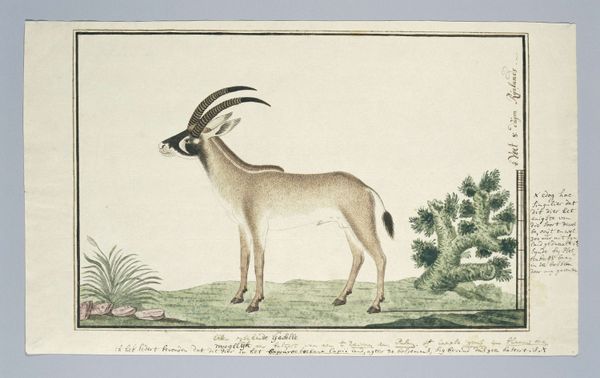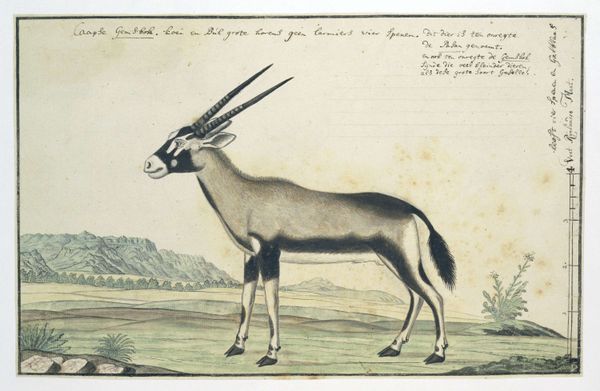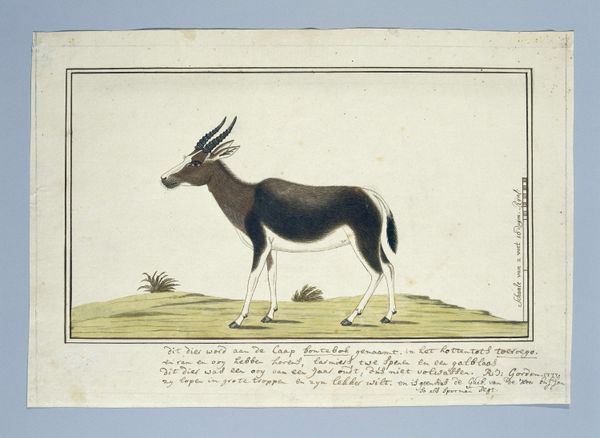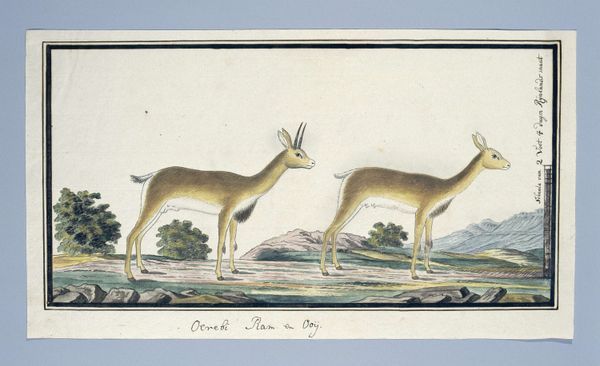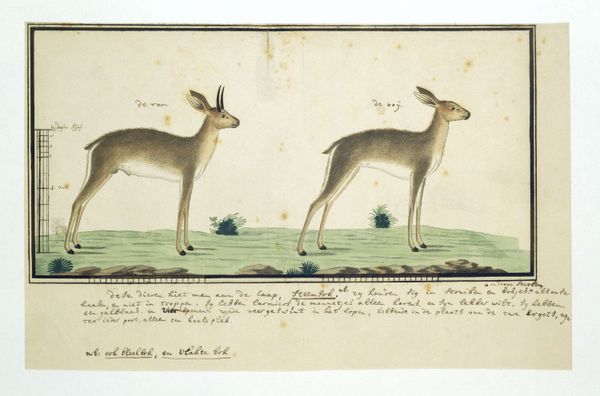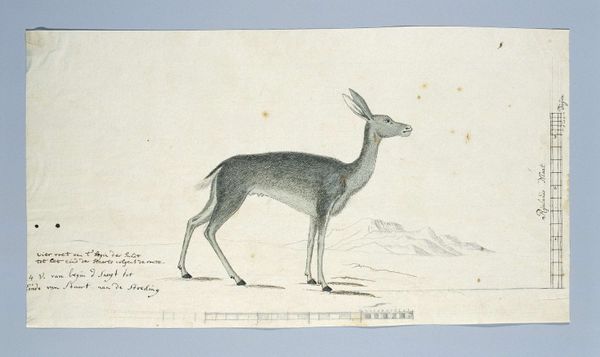
drawing, paper, watercolor
#
drawing
#
landscape
#
paper
#
watercolor
#
coloured pencil
#
watercolour illustration
#
naturalism
#
watercolor
Dimensions: height 191 mm, width 220 mm
Copyright: Rijks Museum: Open Domain
Curator: Pieter Withoos created this delicate watercolor drawing of a Common Snipe around 1687 to 1692. It's a beautiful example of naturalism, rendered on paper with subtle colorations. Editor: My first impression is of a muted, almost wistful piece. The limited color palette, dominated by browns and grays, lends a somber mood to what might otherwise be a straightforward ornithological study. Curator: Well, Withoos wasn't just painting a bird; he was documenting a species in a time of burgeoning scientific inquiry. The image is less an artistic statement and more a record of the natural world, fueled by expanding colonial projects and their accompanying desire to catalogue resources. Editor: I concede the drawing has documentary value, but the placement of the bird – perched on a vague bank with that blurry body of water behind it – doesn't serve scientific clarity so much as create a composition, a careful arrangement of forms in relation to one another. See how the curve of its back mirrors the slope of the bank? Curator: That careful composition surely spoke to wealthy patrons who were keen on illustrating and, therefore, controlling nature. These kinds of illustrations were crucial to disseminating knowledge about the natural world and shaping perceptions of resources and territories. The Common Snipe, thus rendered, became both a specimen and a symbol of Dutch natural prowess. Editor: I agree that it undoubtedly holds some historical context, yet I remain fixated on how much texture he renders by building up tone. Look how watercolor bleeds into various shapes, producing different effects and gradients; the layering gives dimension to its plumage. Curator: Yes, there's an aesthetic intention behind the supposedly objective eye, an important interplay, certainly. Perhaps we might also consider that his father was also an artist, but specialised in painting flowers; certainly this can contribute to his perspective here. Editor: Absolutely, it makes sense and creates more of an understanding of his compositional decisions. In any case, it does give the piece an individual sensitivity that a purely scientific illustration would lack, even considering historical context. Curator: Indeed. Together we see how politics, patronage, and artistry merge in a seemingly simple representation of nature.
Comments
No comments
Be the first to comment and join the conversation on the ultimate creative platform.
